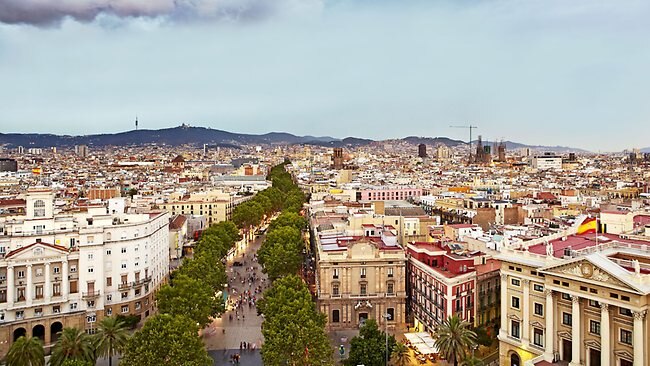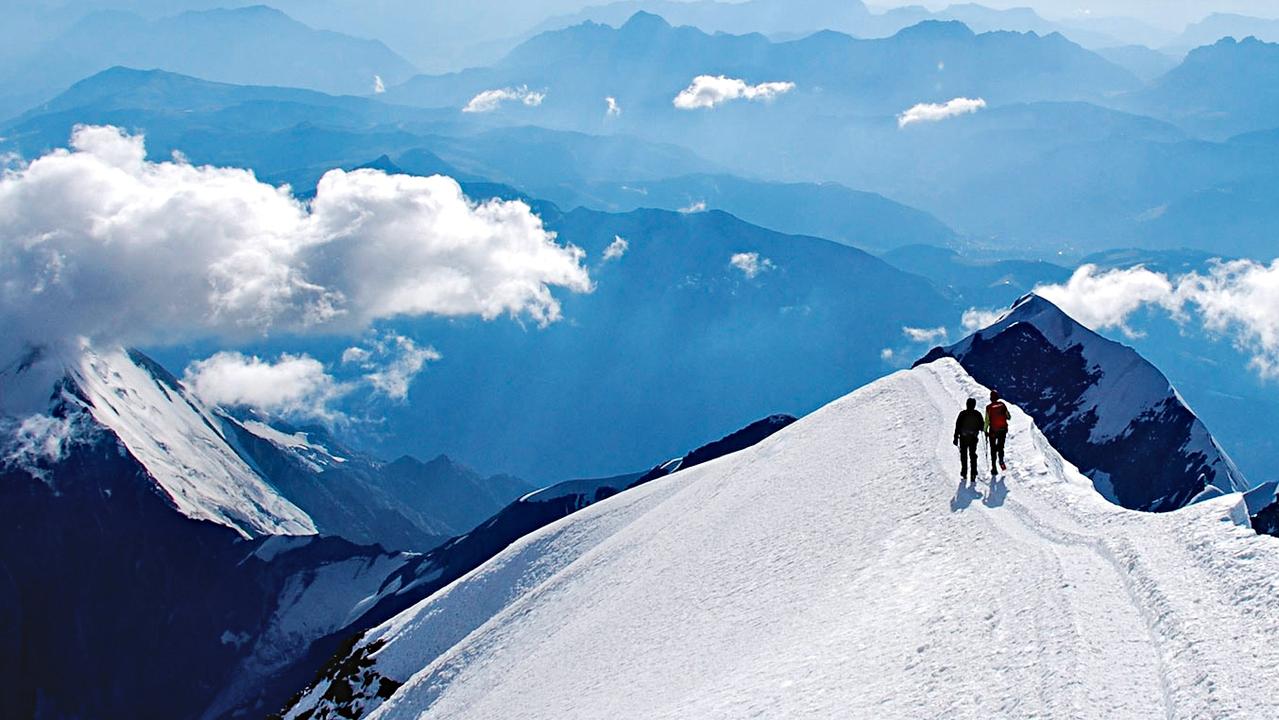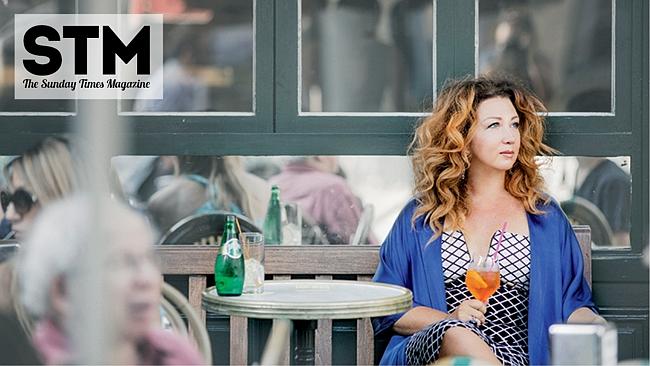Pleasures of Spain in Catalonia
TASTE tapas in Barcelona, explore hidden beaches and the coastline that inspired Salvador Dali, writes Anthony Ham.

TASTE tapas in Barcelona, explore hidden beaches and the coastline that inspired Salvador Dali, and end your journey in an alpine national park, writes Anthony Ham.
Barcelona
- Best for tapas
In the tangled lanes of the Barri Gotic (Catalan for the Gothic Quarter), tapas is all about tradition.
The stone buildings of Barcelona's oldest neighbourhood shelter tapas bars that show enduring allegiance to two simple truths: first, take the finest ingredients, interfering with them as little as possible; and second, the best things come in small packages.
The celebrated El Xampanyet is the first stop on a tapas crawl guided by food critic Bego Sanchis, owner of the Cook & Taste cooking school, and there is an atmosphere of unrestrained Catalan conviviality.
Shouting to make herself heard and because that is what one does in a Spanish bar Bego orders cava and tangy boquerons en vinagre (white anchovies in vinegar), which are intense and zesty.
After emptying our glasses, we cut across the throng of La Rambla towards Quimet i Quimet, a miniature bar where the walls are crammed with bottles of wine and cans of seafood.
"With tapas, most think of Basque tapas those little pieces of bread with food on top, lined up along the bar," Bego says as we contemplate our order portions of anchovies, prawns and mussels, all put in the shade by a splendid salmon, honey and cream cheese concoction, montadito de salmon.
"In Barcelona, tapas is more about preserved foods, the best seafood from a can, and main dishes in smaller servings," Bego says.
Just because there is something irresistible about a journey defined by food, Bego leads us back to the Barri Gotic and the Xarcuteria La Pineda, here since 1930. Great legs of ham hang above cava-sipping regulars.
The barmen join friends and customers, one and the same, for quiet conversations in Catalan. Occasionally, someone breaks into song to accompany Carlos Alcayna, a regular who sits in a corner strumming his guitar between sips of vermouth.
"I used to work across the road and come here for lunch," Carlos says. "Now, La Pineda is my office."
We try slices of jamon iberico (cured ham) and canned razor clams served with blood-red vermouth. Though it is delicious, the food is almost incidental.
"Tapas is a social event," Bego says, "a reason to catch up with friends. The role of the food is to bring people together."
More information: The oficina d'informacio de turisme de Barcelona has offices around the city (barcelonaturisme.com). Cook & Taste runs twice-daily, 3 1/2-hour cooking classes (cookandtaste.net).
- Where else to eat
Pla For a market-style take on tapas, seek out this bar on a quiet lane of Barcelona's Gothic Quarter.
Pla's chef, Sergio Sanchez-Montijano, doesn't let the medieval decor restrain his modern Mediterranean flourishes, with dishes such as braised lamb in its own juice, light white-bean puree, glazed potatoes and leeks with a touch of thyme (elpla.cat).
- Where to stay
Hotel Banys Orientals On a pedestrianised street on the cusp of Barcelona's Gothic Quarter and the cool El Born area, this boutique hotel inhabits the shell of a handsome 18th-century townhouse.
Rooms are classy and contemporary ask for one overlooking the back lane for a quieter night's sleep. They also offer spacious suites in two nearby buildings (hotelbanysorientals.com).
Costa Brava
Best for beaches
North of Barcelona, beyond the concrete sprawl that bespoils the city's outskirts, nature suddenly takes over.
The Costa Brava's rocky headlands force the main highway inland and a quiet road, narrow and sinuous, traverses the coast's steep contours.
Soon it reaches the village of Tossa de Mar, where a crescent of sand arcs towards a pine-clad headland fenced by 14th-century walls and towers. On the water, fishing boats and pleasure craft bob gently in the sheltered bay.
It's easy to see why, in the 1930s, painter Marc Chagall described Tossa as "blue paradise".
Tossa's main beach, Platja Gran, is made up of a golden, Mediterranean mix of sand and fine pebbles that sparkle in the sun. In high summer, the beach can be overwhelmed by bodies but north along the same bay, Platja del Reig and Platja Mar Menuda remain more intimate.
Further along the coast is another candidate for the title of the Costa Brava's prettiest village beach, Calella de Palafrugell.
In this secluded hamlet, fish restaurants in gleaming white cottages overlook the sand.
The signature Costa Brava beach, however, is a concealed cove a U-shaped inlet occupied in equal measure by sea and sand, and surrounded by pine forests climbing steep hillsides.
All of these elements are present at the bay of Aiguablava.
Even in the height of summer, its rocky outcrops keep overcrowding at bay, and climbing down through the trees to its quiet sands feels like stumbling upon a well-kept local secret.
"Look around you and listen," says Noemi Garcia, a young lifeguard. "What languages do you hear most? Spanish and Catalan. That's because whether we're here for work or just to go for a swim, we're all from around here. We're all from the Costa Brava."
-- More information: costabrava.org
- Where to eat
- Toc Al Mar
On a slight rise above the beach at Aiguablava, this open-air restaurant feels like an extension of the beach. Order grilled fish, caught by Ramon Deulofeu and cooked over an oak-wood fire.
- Where to stay
- Hostal Sa Rascassa
In Aiguafreda, this early 20th-century home combines stone architecture and exceptional food. It is the location and attention to detail by owner Oscar and husband-and-wife team Leo and Angela, who run the kitchen that make this the perfect escape (hostalsarascassa.com).
Cap de Creus and Figueres
Best for Dali
An austere landscape of rock, Cap de Creus is mainland Spain's easternmost point and the place where master painter Salvador Dali found much of his inspiration.
"It's impossible to understand Dali's surrealism," says Antoni Pitxot, a painter and Dali's one-time confidant and collaborator, "without understanding his relationship with Cap de Creus.
From when he was a child, Dali used to spend hours at a time here, walking barefoot across the cape then contemplating for hours the rocks, the sun on them, how the light fell.
Ah, the conversations we used to have about those rocks! He would say to me, 'Did you see that ... ?' "
Dali's passion for the landscape is contagious. Cap de Creus is an otherworldly terrain of strangely striated rocks glistening with the patina of ages, veins running through them like rivers.
Outcrops come suddenly into focus bizarre rocky forms that evoke Dali's sense of the absurd. Here, a craggy, wind-worn face in profile; there, the rock that served as muse for Dali's masterwork, The Great Masturbator.
"For Dali, Cap de Creus was a fantastical place," Pitxot says.
"Or as he put it, 'a grandiose geological delirium'."
Dali's eccentricity is much in evidence in the village of Port Lligat.
His former home, which is now the Casa Museo Dali, is an old fisherman's hut that was transformed into a labyrinthine building now filled with his weird paraphernalia: a stuffed polar bear, a phallus-shaped swimming pool, a wooden bust of Christ, an unfinished painting on the easel.
Although he spent most of his adult life on the coast, Dali was born and died in the town of Figueres, an hour inland.
Here, the Dali Theatre-Museum co-designed with Pitxot before Salvador Dali's death houses the world's finest collection of his art works.
Lurking in the background of so many of his masterpieces (Leda Atomica, The Spectre of Sex Appeal, Othello Dreaming of Venice) is the artist's beloved Cap de Creus, a land that is both real and imagined.
-- More information: The fundacio Gala-Salvador Dali oversees the painter's legacy and runs Dali museums at Figueres and Port Iligat (salvador-dali.org).
- Where to eat
Restaurante Cuatro Cadaques, a pretty seaside town on the Cap de Creus peninsula, has many waterfront restaurants but Cuatro is a cut above. Try the excellent grilled seafood platter (cuatro-restaurant-cadaques.com).
- Where to stay
- Hotel Llane Petit
In Cadaques' quiet, southern reaches and surrounded by rocks that echo Cap de Creus, this attractive hotel has cheerful white rooms and unusual, angular balconies ask for one with a view over the small cobbled beach (llanepetit.com).
Girona
Best for medieval Spain
Crowned by a looming cathedral and encircled by formidable walls, Girona looks like the film set for a medieval epic.
This is one city that really knows how to put on a show. The star historical attraction is its architecture Girona's high stone walls contain churches and former cathedrals, one-time synagogues and minor palaces, all dating from different eras of its medieval past.
Across the steep-sided hill that Girona's old town inhabits, an intricate network of stone-clad laneways turn and twist.
Buildings guarded by high archways and antique doors, adorned with balconies of wrought iron, tumble down to one of the prettiest urban river frontages in all of Catalonia.
Wandering these alleyways, it somehow isn't all that surprising to see a robed monk emerging from the shadows.
The mysterious figure is one of many who take part in Girona's numerous historical re-enactments their way of breathing life into the city's medieval past.
Today is a restaging of its heroic defence against Napoleon's armies in 1808, Girona held firm against the invaders for seven months while around them cities and entire regions capitulated.
Looking rather Napoleonic himself, a local man who introduces himself simply as Jose is playing the leader of Girona's defenders a mix of grizzled chaps dressed as soldiers with fixed bayonets and town noblemen who swagger and strut.
"Why do we do this?" Jose says to me.
"Partly, it's a bit of fun. But it's also because we take our history seriously in Girona. The city's story is written on every stone."
-- More information: The local government tourist office (www.girona.cat/turisme/eng/activitats.php) is supplemented by the privately run turisme imaginari (gironabooking.com).
- Where to eat
Cafe le Bistrot A throwback to the literary cafes of early 20th-century Catalonia, this bistro serves Catalan and French food (cafelebistrot.com).
- Where to stay
- Hotel Historic
A few steps from the cathedral and high on the old city hill, Hotel Historic has spacious rooms with beamed ceilings. The top-floor suite is flooded with natural light, while the on-site apartments have more space and a retro aesthetic (hotelhistoric.com)
Parc Nacional d'Aiguestortes i Estany de Sant Maurici
Best for scenery
Deep in the Pyrenees, where Spain rises to meet the rest of Europe, the Parc Nacional d'Aiguestortes i Estany de Sant Maurici is northeastern Spain's most beautiful corner.
"This park is like Yellowstone, Canada and the Alps, rolled into one and in miniature," says Josep Maria Rispa, who's been a park ranger here for 20 years. "You have the best in alpine scenery within a small area."
Entering the park from the south-west, the valley of the Riu de Sant Nicolau, carved by ancient glaciers, climbs into the park's inner reaches.
At 1600m above sea level, the trail accessible at this point only on foot passes the pristine freshwater of Estany de Llebreta.
"Of around a thousand lakes in the Pyrenees," Josep says, "almost two hundred are within the park's borders. Nowhere in the Pyrenees nowhere else in southern Europe, in fact is there such a concentration of lakes."
Estany (the Catalan word for lakes) and aiguestortes (winding streams) are what give the park its name.
Beyond Estany de Llebreta, the valley climbs to a rugged plateau watered by clear mountain streams and home to semi-wild horses.
Valleys narrow and rise ever deeper into the park before finally reaching remote Estany Llong, 2000m above sea level and a 90-minute hike beyond the last taxi drop-off point.
Here, in the park's heart, there is a sense of standing between two different worlds. Past the mountains to the west, Atlantic weather prevails, but to the east the climate is Mediterranean.
"You must respect these mountains," Josep says. "They're beautiful but it could snow here, even in summer."
He points out a pine tree that somehow survives up here at 600 years old, it predates Columbus.
In the distance beyond are the jagged granite shards of the Agujas Perdut (Lost Peaks) mythic natural fortresses around which white clouds swirl and are said to shelter an invisible lake.
Even after two decades of seeing it, Josep is silenced by the view all of Catalonia, stretched out at the mountains' feet.
-- More information: Park information can be found at reddeparquesnacionales.mma.es.
Private vehicles cannot enter the park, and the hike from the park's entrance to Estany Llong takes 3 1/2 hours. Estany Ilong is a 90-minute hike beyond the last taxi drop-off.
Where to eat
El Caliu
At the top of the village of Taull, this well-regarded local restaurant does creative salads and mountain dishes such as stuffed lamb (elcaliutaull.com).
- Where to stay
Pension Santa Maria Taull is home to a stone-built Romanesque church that ranks among the most beautiful.
Within sight of it, this charming house of rustic stone, wood and slate, overseen by owner Alex, is a rambling country retreat of impeccable taste. Like the open fire, rooms are warm and welcoming (taull.com).



